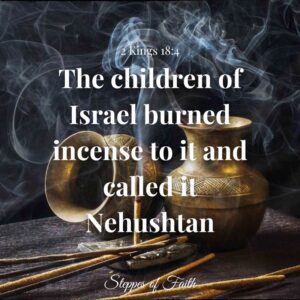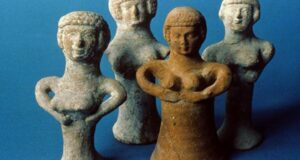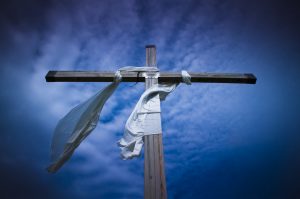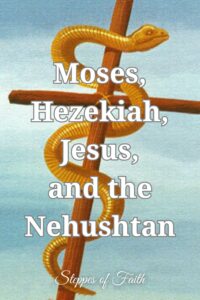
“The children of Israel burned incense to it and called it Nehushtan.” (2 Kings 18:4)
During the time of the kings in the Old Testament, King Hezekiah of Judah tore down the high places of pagan worship and destroyed the Nehushtan. The king’s actions were long overdue.
Hundreds of years earlier, God miraculously delivered the Israelites from Egypt, but the people soon rebelled. God punished them by forcing them to wander in the desert for forty years. Near the end of this time, they experienced their first victory over the Canaanites (Num 21:1-3). But instead of entering the Promised Land, God told them to head south and go around Edom, sparking widespread grumbling.
The Israelites once again complained about the lack of food and water, but this time, they also complained about God’s manna. Numbers 21 records one of these final moments of complaining and God’s subsequent reprimand.
“And the people spoke against God and against Moses: ‘Why have you brought us up out of Egypt to die in the wilderness? For there is no food and no water, and our soul loathes this worthless bread.’ So the LORD sent fiery serpents among the people, and they bit the people, and many of the people of Israel died.” (Num 21:5-6)
The people quickly recognized their sin and begged for relief. They implored Moses to plead with God to take the poisonous snakes away. Moses, profoundly and faithfully caring for the people for forty years, obliged their pleas once again and petitioned God for mercy.
The Lord responded by telling Moses to fashion a bronze serpent and attach it to the end of a pole. If a snake bit anyone, all that person needed to do was look at the bronze serpent, and they would live. Though hundreds died, many survived.
Over the coming years, the Israelites slowly turned from God. They became influenced by the pagan Canaanite religion and many others, which often incorporated idols into their worship practices. One of the more popular idols was Asherah, which they symbolized with figurines, pillars, and tall totem-like poles.
The Israelites also worshiped Moses’ bronze serpent. It appears the priests had kept it among the temple furnishings, and it became known as the Nehushtan from the Hebrew nahash (“snakes”) and nechosheth (“piece of bronze” or “piece of copper”). As a part of the temple, they burned incense to it.
[READ MORE: Separating Fact From Myth: Asherah and Idol Worship]
Nehushtan and Asherah
Canaanites commonly regarded Asherah and snakes as fertility symbols. Believing the Nehushtan held the power to save lives, the Israelites found the bronze serpent particularly attractive. A long series of evil kings condoned pagan practices. However, God eventually placed a righteous king on Judah’s throne.
“He did what was right in the sight of the LORD, according to all that his father David had done. He trusted in the LORD God of Israel so that after him was one like him among all the kings of Judah nor who were before him. For he held fast to the LORD. He did not depart from following Him but kept His commandments which the LORD had commanded Moses.” (2 Kgs 18:3, 5-6)
King Hezekiah was the first king to remove the “high places” of pagan worship throughout Judah. He also destroyed the idols created for Baal and Asherah (Deut 12:2-7, 13-14) and the Nehushtan.
“He removed the high places and broke the sacred pillars, cut down the wooden image, and broke in pieces the bronze serpent that Moses had made. For until those days, the children of Israel burned incense to it and called it Nehushtan.” (2 Kgs 18:4)
Because of Hezekiah’s obedience, the Lord “prospered him wherever he went. But, despite Hezekiah’s religious reforms, his efforts did not last long after his death twenty-nine years later.
Upon assuming Judah’s throne, his son, Manasseh, soon “did evil in the sight of the LORD (2 Kgs 21:2).” He rebuilt the high places, recreated the altars and wooden images of Baal (several of which he placed in the Lord’s temple), practiced witchcraft, and consulted mediums. Worse of all, he sacrificed his son by fire to the pagan god Molech.

Nehushtan and Jesus
The Bible mentions Nehushtan by name only once, but Jesus refers to it in the gospel of John in His conversation with Nicodemus.
“And as Moses lifted up the serpent in the wilderness, even so must the Son of Man be lifted up, that whoever believes in Him should not perish but have eternal life.” (Jn 3:14-15)
Jesus’ use of the phrase “lifted up” is the first of three He makes in the book of John, the others being 8:28 and 12:32.
“Then Jesus said to them, ‘When you lift up the Son of Man, then you will know that I am He.” (8:28)
“And if I am lifted up from the earth, I will draw all peoples to Myself.” (12:32)
Jesus possibly made these three statements under the influence of Isaiah 52.13.
“Behold, My Servant will be successful; He will be raised and lifted up and greatly exalted.” (CSB)
“Lifted up” holds a double meaning, one of which refers to Nehushtan and the other to Jesus’ crucifixion. God used the poisonous snakes as instruments of judgment and death, but the Nehushtan became an instrument of physical life. One only needed to look at it in faith.
The same is said of Jesus “lifted up” on the cross. The instrument of His death is now our instrument of spiritual salvation and everlasting life. We only need to “look” at Him in faith. Like the Israelites, who looked at the Nehushtan and then considered and repented of their sin, we look at Jesus and consider our sin. We look at the immensity of His mercy and repent.
High and Lifted Up
Additionally, as in Isaiah 52:13, Jesus being “lifted up” refers to His glorification through His death and resurrection. It is an Old Testament preview of His exaltation and suffering in His atoning sacrifice by being nailed to a Roman cross that the guards lifted and put into place. It is also of His future kingdom, where He will rule eternally (Rev 21:1-8).
The Nehushtan saved the people from their rebellion and sin, but only temporarily. Jesus saves us from our sins eternally. He promises to remove our transgressions “as far as the east is from the west (Ps 103:12)” and throw them to the bottom of the sea (Micah 7:19), never to be remembered again.
Jesus’ finished work on the cross and subsequent resurrection prove that He is the true Messiah and Son of God. He alone is the only way, truth, and life (Jn 14:6). But we must look at Him in faith and put our complete trust in Him and not the Nehushtan in our lives. Only God is worthy of our worship and adoration.

